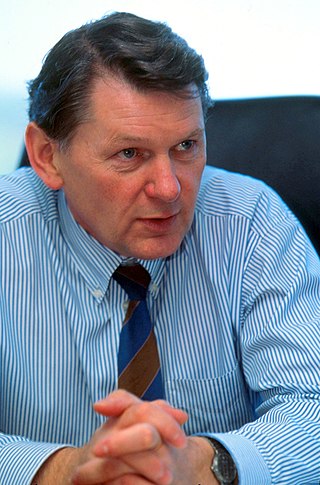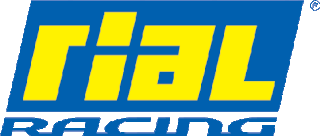Gustav Brunner | |
|---|---|
| Born | 12 September 1950 Graz, Austria |
| Nationality | |
| Occupation(s) | Formula One designer and engineer. |
Gustav Brunner (born 12 September 1950) is an Austrian Formula One designer and engineer.
Gustav Brunner | |
|---|---|
| Born | 12 September 1950 Graz, Austria |
| Nationality | |
| Occupation(s) | Formula One designer and engineer. |
Gustav Brunner (born 12 September 1950) is an Austrian Formula One designer and engineer.
Born in Graz, he started his career in racing car design at the German-based constructor McNamara. He first entered F1 in a brief spell working for the ATS team in 1978, before designing cars for Formula Two and sportscar racing. He came to prominence in Formula One in 1983, by returning to ATS. He designed two chassis for the team, the 1983 D6 and the 1984 D7, before quitting after a number of arguments with team principal Günter Schmid. In 1985 he joined RAM Racing, designing the RAM 03 car. By this time he was gaining a reputation within the sport for designing good chassis on a limited budget, even if the teams he had worked for had a conspicuous lack of results.
He then worked for Arrows [1] and Ferrari, working for the latter on their F1/87 car, before reuniting with ATS boss Schmid as designer for his new Rial F1 outfit in 1988. He fell out with Schmid again and became Technical Director of the Zakspeed team. When the team folded at the end of the 1989 season, he moved on to Leyton House, where he worked on the March CG891 and stayed on as they reverted to March Engineering.
When March Engineering folded, he moved to Minardi for 1993, designing their successful M193 chassis, before another switch, to Ferrari's Research & Development department, eventually returning to Minardi as chief designer in 1997 to help new technical director, Gabriele Tredozi, and became the technical director in 1999.
Following three successive seasons where his Minardi designs had been praised for their innovative design considering such small resources, he was head-hunted by Toyota to become their Technical Director for their new Formula One team in 2001. He left Toyota at the end of 2005.
Minardi was an Italian automobile racing team and constructor founded in Faenza in 1979 by Giancarlo Minardi. It competed in the Formula One World Championship from 1985 until 2005 with little success, nevertheless acquiring a loyal following of fans. In 2001, to save the team from folding, Minardi sold it to Australian businessman Paul Stoddart, who ran the team for five years before selling it on to Red Bull GmbH in 2005 who renamed it Scuderia Toro Rosso. Initially called "M" then a number, from 2001, all of Minardi chassis were called "PS", the PS being the initials of team owner, Paul Stoddart.

John Edward Barnard, is an English engineer and racing car designer. Barnard is credited with the introduction of two new designs into Formula One: the carbon fibre composite chassis first seen in 1981 with McLaren, and the semi-automatic gearbox which he introduced with Ferrari in 1989.

Rial is a German producer of light alloy wheels and rims, and was a Formula One constructor competing in the 1988 and 1989 seasons. Founded in the 1970s as a wheel rim producer, the company was bought by Günter Schmid, ex-owner of the ATS wheels company in 1987. Schmid followed the same strategy as he had at ATS, advertising the Rial wheel brand by entering Formula One as a constructor. Rial participated in 32 Grands Prix, entering a total of 48 cars. They scored six championship points, finishing a highest of ninth in the constructors championship in 1988. After leaving Formula One at the end of the 1989 season, the Rial Racing division was closed, and the company did not race again. Rial continues to manufacture wheels and rims from its factory in Fußgönheim.

Rory Byrne is a South African semi-retired engineer and car designer, most famous for being the chief designer at the Benetton and Scuderia Ferrari teams of Formula One.

Harvey Ernest Postlethwaite was a British engineer and Technical Director of several Formula One teams during the 1970s, 1980s and 1990s. He died of a heart attack in Spain while supervising the testing of the aborted Honda F1 project.
ATS is a German company that manufactures alloy wheels for road and racing cars. It is based in Bad Dürkheim near the Hockenheimring race circuit. ATS had a Formula One racing team that was active from 1977 to 1984.

Mauro Forghieri was an Italian mechanical engineer, best known for his work as a Formula One racing car designer with Scuderia Ferrari during the 1960s and 1970s. He is credited with introducing the first designed rear wings to Formula One at the 1968 Belgian Grand Prix. He oversaw numerous technical developments during his tenure at Ferrari, including the creation of the 250 GTO and P-series sports racing cars, the Ferrari flat-12 series of engines, Ferrari's first turbocharged engine in the 126 C F1 car, and a prototype semi-automatic transmission in 1979. During Forghieri's tenure with Ferrari, the company won the F1 World Driver's Championship four times and the F1 World Constructors' Championship seven times. After leaving Ferrari in 1987, he worked at Lamborghini and Bugatti then founded the Oral Engineering Group in 1995.
Michael Coughlan is a British motor racing engineer and designer. He was Chief Designer for the McLaren Formula One team from 2002 to 2007, where he was suspended for his part in the 2007 Formula One espionage controversy between McLaren and Ferrari, before his contract was subsequently terminated. He was then Chief Technical Officer for Williams F1 from June 2011 to July 2013, before abruptly stepping down "with immediate effect" according to the team.

Carlo Chiti was an Italian racing car and engine designer best known for his long association with Alfa Romeo's racing department. He also worked for Ferrari and was involved in the design of the Ferrari 156 Sharknose car, with which Phil Hill won the 1961 championship.
Sergio Rinland is an Argentine engineer best known for his work in Formula One. He is currently owner and managing director of the automotive engineering and management consulting company Astauto Ltd.

The Minardi PS01 was the car with which the Minardi team competed in the 2001 Formula One World Championship. It was initially driven by Brazilian Tarso Marques, who returned to the team after last driving an F1 car in 1997, and Fernando Alonso, a Spanish rookie who had graduated from Formula 3000 and was in a long-term contract to Flavio Briatore's driver management scheme.
Giacomo Caliri is an Italian former Formula One engineer.

The Toyota TF104 was a Formula One car used by the Toyota F1 team during the 2004 Formula One season.

The Ferrari F1/86 was the car with which Scuderia Ferrari competed in the 1986 Formula One World Championship. The car was designed by Harvey Postlethwaite, who had also designed its predecessor, the 156/85. It was driven by Italian Michele Alboreto and Swede Stefan Johansson. The car was very uncompetitive, despite the engine being regarded as one of the strongest on the grid. It was replaced by the Ferrari F1/87 for 1987.
George Harold Ryton is a British engineer best known for his involvement in Formula One auto racing.

Enrique Hector Scalabroni is an Argentinian race car designer, technical director, and team racing boss. He was employed by Dallara, Williams, Ferrari, Lotus and Peugeot Sport between 1985 and 2002, before setting up his own F3000 and GP2 team in 2003, BCN Competicion, which lasted till the end of 2008.
Maurer Motorsport was a German Formula Two racing car constructor and entrant, founded by Willy Maurer, who had connections to the German Mampe drinks company. The team was notable for its involvement in the early careers of future Ferrari designer Gustav Brunner and Formula One driver Stefan Bellof.

The ATS D7 was a Formula One racing car used by Team ATS in the 1984 Formula One season. The car was designed by Gustav Brunner and was driven for most of the season by German Manfred Winkelhock. He was joined in a second car late in the season by Formula One rookie, Austrian driver Gerhard Berger. It was the last car produced by the ATS team.

The ATS D6 was a Formula One racing car manufactured and raced by the Team ATS during the 1983 Formula One season. It was powered by the BMW M12/13 4-cylinder turbocharged engine but the team failed to score any points.
The Rial ARC1 was a Formula One racing car manufactured and raced by Rial Racing for the 1988 Formula One season. It was powered by a Cosworth DFZ V8 engine. Its best finish was at the 1988 United States Grand Prix when Andrea de Cesaris drove it to fourth place.